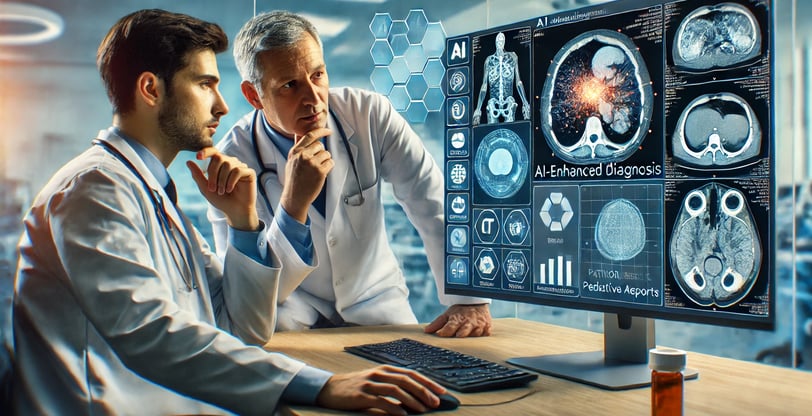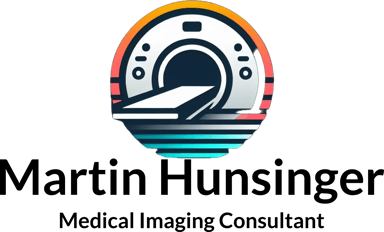Bridging the AI Divide in Radiology: How Multimodal AI is Splitting the Field
Radiology has always been a technologically driven specialty, but the rise of artificial intelligence (AI) is creating an unprecedented technology divide within the profession. Younger radiologists, trained alongside AI tools, are poised to embrace multimodal AI and superdiagnostics—integrating imaging with genomics, pathology, and real-time health data. Meanwhile, many experienced radiologists, though highly skilled, may struggle to adapt to this rapidly evolving landscape. This divide is more than just a difference in familiarity with new software. It is a fundamental shift in how radiologists diagnose, interact with data, and collaborate with AI-driven tools. If not addressed, this gap could lead to disparities in patient care, workflow inefficiencies, and potential job market shifts. Let’s explore why this divide is forming, what it means for the future of radiology, and how the field can navigate this transformation.


The Rise of Multimodal AI and the Changing Role of Radiologists
Radiology has long been a leader in AI adoption due to its digital-first nature and structured data formats like DICOM. However, the field is now moving beyond simple AI-driven automation to multimodal diagnostics—where radiologists must synthesize insights from imaging, genomics, pathology, wearable sensors, and patient history.
This transition shifts the radiologist’s role from image interpreter to diagnostic orchestrator, where AI assists in integrating multiple data sources into a comprehensive clinical picture. Instead of focusing solely on reading scans, radiologists will oversee AI-driven workflows, validate AI-generated findings, and guide clinical teams with enhanced, data-rich insights.
For younger radiologists, this shift is exciting. They are already being trained in AI-driven workflows, learning coding basics, and engaging with informatics. But for many seasoned radiologists, this transformation is daunting—requiring a complete overhaul of traditional workflows, new skills, and a shift in mindset.
Why the AI Divide is Emerging
Differences in Training & Education
Younger Radiologists: Entering the field with exposure to AI, machine learning concepts, and multimodal diagnostics. Many have formal training in data science and informatics.
Older Radiologists: Trained in an era where image interpretation was the primary skillset. AI was not part of their education, making it an unfamiliar and sometimes intimidating tool.
Technological Comfort vs. Resistance
Newer generations of radiologists embrace AI as a tool that enhances productivity and precision.
More experienced radiologists, while open to AI, often express skepticism, citing concerns about AI’s interpretability, reliability, and its potential to devalue human expertise.
Workflow Integration Challenges
AI-powered platforms can streamline workflows, but their integration into legacy PACS and RIS systems is uneven.
Younger radiologists, comfortable with cloud-based AI tools, may struggle to work with traditional systems, while older radiologists may find AI-based dashboards overwhelming.
Fear of Job Displacement
While AI won’t replace radiologists, it is reshaping the job market.
Older radiologists may fear being phased out as AI-driven workflows require skills in data science, AI validation, and multimodal interpretation—fields they weren’t trained in.
The "Black Box" Problem & Trust in AI
AI models, particularly deep learning algorithms, often lack transparency in how they arrive at conclusions.
Younger radiologists, trained in AI, trust and understand its strengths and limitations.
Older radiologists may struggle with interpreting AI’s decision-making process, leading to hesitation in fully relying on AI-assisted diagnostics.
The Impact of the AI Divide on Patient Care
The widening AI divide in radiology has direct implications for patient care quality, efficiency, and trust in diagnostics:
✅ Younger radiologists using AI-driven workflows may achieve faster, more precise diagnoses, integrating multiple data streams for holistic patient assessments.
⚠️ More experienced radiologists may hesitate to fully integrate AI, relying on traditional diagnostic approaches, which could lead to disparities in how AI-supported vs. AI-cautious radiologists handle cases.
🚨 Healthcare systems could see a divide in AI adoption, where facilities with younger, AI-trained radiologists operate differently from those where older radiologists dictate workflow practices.
If left unaddressed, this divide could lead to a two-tiered radiology workforce, with different standards of care and diagnostic approaches.
How to Bridge the Gap: A Unified Approach to AI in Radiology
To prevent the radiology field from fragmenting, proactive steps must be taken to integrate AI across all generations of radiologists:
✅ Expand AI Education for Mid-Career & Senior Radiologists
Hospitals and training programs must offer structured AI training for experienced radiologists.
Courses in AI interpretation, multimodal data integration, and risk assessment can empower radiologists to embrace AI confidently.
✅ Create AI-Radiologist Teaming Workflows
Instead of positioning AI as a replacement, it should be integrated as an assistive tool, where human oversight remains central.
AI-driven recommendations should be transparent, with explanations provided in clinically meaningful terms.
✅ Mentorship & Cross-Generational Collaboration
Pair younger, AI-savvy radiologists with more experienced radiologists to encourage knowledge exchange.
Senior radiologists can provide clinical wisdom and expertise, while younger radiologists can assist with AI integration.
✅ Redesign Radiology Training for the Multimodal Era
Radiology programs should integrate AI, genomics, and informatics into standard curricula, ensuring all radiologists gain competency in AI-powered workflows.
✅ Encourage AI Regulation & Standardization
The field must set guidelines for AI adoption, ensuring tools are used consistently and ethically.
AI should augment human expertise, not replace it.
Conclusion: The Future of Radiology Must Be Unified
AI is not just another tool in radiology—it is fundamentally transforming how diagnoses are made, how data is processed, and how patient care is delivered.
If younger and older radiologists remain divided in AI adoption, the field risks creating two competing diagnostic paradigms—one AI-powered, the other AI-cautious. This divide could fragment healthcare systems and create disparities in patient care.
However, if the profession actively works to bridge this gap, radiology can successfully transition into the multimodal AI era without leaving anyone behind. A balanced approach—integrating AI while preserving human expertise—will ensure that radiologists remain at the forefront of AI-driven medicine.
The challenge now is not whether AI belongs in radiology—it’s whether radiologists of all generations can embrace it together.
Final Thought: Will You Be Ready for the AI Shift?
The future of radiology isn’t about AI replacing radiologists—it’s about radiologists mastering AI.
The question is: Are you ready to evolve with it, or will you be left behind?
What are your thoughts? Are you seeing this AI divide in your own radiology practice? Let’s discuss in the comments!
